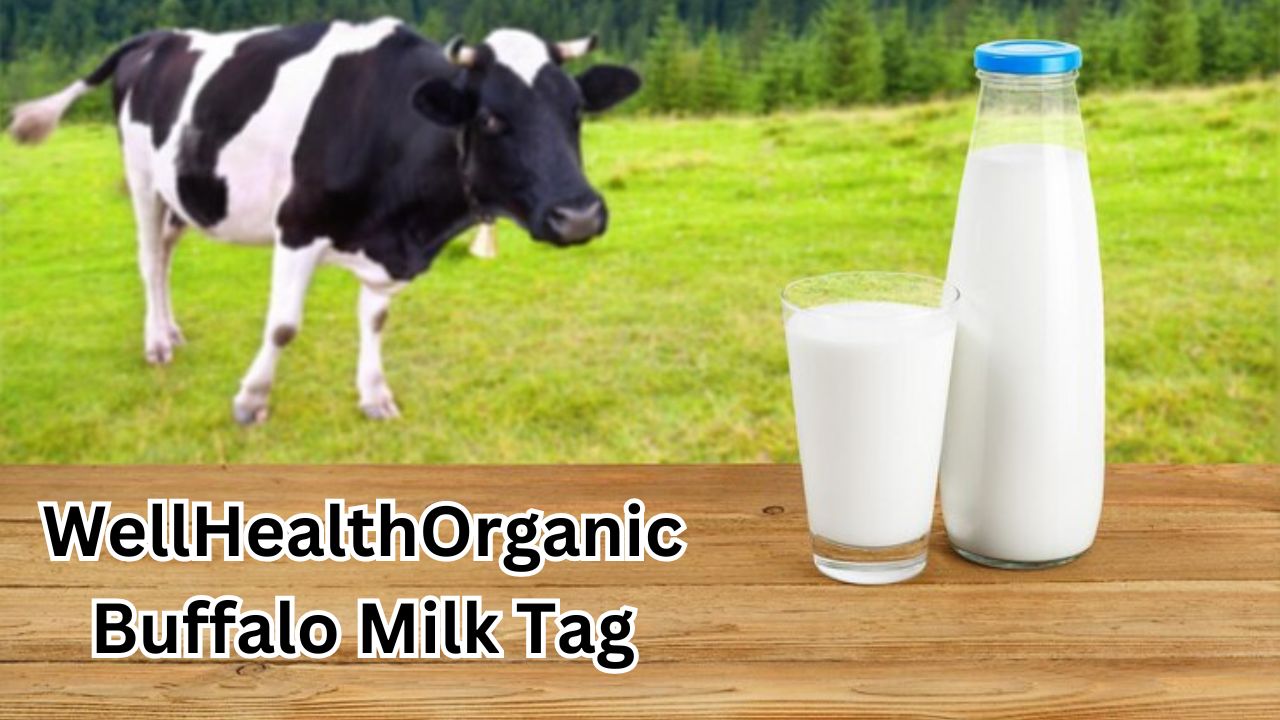HEALTH
The Health Benefits of Cassasse: Why You Should Include It in Your Diet
Published
6 months agoon
By
Saad
Introducing Cassasse – the hidden gem of superfoods that has been making waves in the world of health and nutrition. If you haven’t heard of it yet, get ready to be amazed! This powerful ingredient is not only packed with essential nutrients but also boasts a rich history and cultural significance. From boosting your immune system to aiding in weight loss, cassasse offers a myriad of health benefits that are too good to ignore. So, why not add this incredible food to your diet? In this blog post, we’ll delve into the fascinating world of cassasse and explore its many wonders. Get ready for a journey into better health and wellness like never before!
What is Cassasse?
What is Cassasse, you ask? Well, let me enlighten you. Cassasse is a traditional food that hails from the beautiful island of Mauritius in the Indian Ocean. It is made by fermenting cassava, a starchy root vegetable commonly found in tropical regions. The process involves soaking the cassava overnight and then grinding it into a smooth paste.
Once fermented, cassasse transforms into a slightly sour and tangy concoction with a unique flavor profile that can be described as both earthy and citrusy. This versatile ingredient can be used in various dishes to add depth and complexity to your meals.
Cassasse has been consumed for centuries by the people of Mauritius not only for its incredible taste but also for its numerous health benefits. It’s no wonder that this humble food has become an integral part of their culture and heritage.
In recent years, cassasse has gained recognition worldwide as more people discover its nutritional value and healing properties. So what exactly makes this superfood so special? Let’s dive into its impressive array of nutrients next!
History and Cultural Significance
Cassasse, also known as “the golden grain,” has a rich history and cultural significance that spans centuries. It originated in the fertile lands of ancient Mesopotamia, where it was revered for its nutritional value and medicinal properties.
The consumption of cassasse can be traced back to ancient civilizations such as the Sumerians, Babylonians, and Assyrians. These cultures believed that cassasse possessed mystical powers and used them in various religious rituals. It was often offered as a sacred food during ceremonies honoring their deities.
Over time, cassasse spread to different parts of the world through trade routes and exploration. It became an integral part of many cuisines, adapting to local flavors and cooking techniques. Today, it is widely consumed in countries like India, Egypt, Ethiopia, Mexico, and Italy.
In addition to its historical significance, cassasse holds cultural importance in many communities. In certain regions or festivals, traditional dishes featuring cassasse are prepared with great care and served on special occasions. These recipes have been passed down from generation to generation – a testament to the enduring culinary heritage associated with this versatile grain.
Whether enjoyed as part of an ancestral recipe or embraced by contemporary food enthusiasts seeking nutritious alternatives, cassasse continues to captivate taste buds while preserving its historical roots
Nutritional Value of Cassasse
Cassasse is not only a tasty addition to your meals, but it also packs a punch when it comes to nutritional value. This traditional dish is rich in essential vitamins, minerals, and antioxidants that can contribute to overall health and well-being.
Cassasse contains high levels of vitamin C, which is known for its immune-boosting properties. Just one serving of cassasse provides a significant portion of your daily recommended intake of this vital nutrient. Vitamin C helps strengthen your immune system by promoting the production of white blood cells and enhancing their ability to fight off infections and diseases.
Additionally, cassasse is a good source of dietary fiber. Fiber plays a crucial role in maintaining digestive health by aiding regular bowel movements and preventing constipation. It can also help regulate blood sugar levels and lower cholesterol levels.
Furthermore, cassasse is relatively low in calories while being packed with nutrients. This makes it an excellent choice for those looking to shed some pounds or maintain a healthy weight. The combination of fiber and protein found in cassasse helps keep you feeling fuller for longer periods, reducing the urge to snack on unhealthy foods throughout the day.
Cassasse contains natural anti-inflammatory compounds that may help reduce inflammation in the body. Chronic inflammation has been linked to various health conditions such as heart disease, arthritis, and certain types of cancer. Including cassasse in your diet may help combat these inflammatory processes.
Overall, the nutritional value provided by cassasse makes it an incredibly beneficial food option worth incorporating into your diet regularly.
Health Benefits:
Boosts Immune System
Cassasse is packed with essential nutrients that can give your immune system a much-needed boost. Rich in vitamins A, C, and E, as well as antioxidants, this tropical fruit can help strengthen your body’s defense against infections and diseases. By consuming cassasse regularly, you can enhance the functioning of your immune cells and improve overall immunity.
Promotes Digestive Health
If you’re looking to improve your digestive health, look no further than cassasse. This delicious fruit is high in dietary fiber which aids digestion by promoting regular bowel movements and preventing constipation. Additionally, the natural enzymes found in cassasse support proper nutrient absorption and contribute to a healthy gut microbiome.
Aids in Weight Loss
For those on a weight loss journey or simply trying to maintain a healthy weight, including cassasse in your diet can be beneficial. With its low-calorie content and high fiber content, it helps keep you feeling full for longer periods while also supporting healthy digestion. The combination of these factors makes cassasse an excellent addition to any weight management plan.
Reduces Inflammation
Inflammation has been linked to various chronic diseases such as heart disease and arthritis. Cassasse contains potent anti-inflammatory compounds that help reduce inflammation levels throughout the body. Incorporating this tropical fruit into your diet may therefore assist in alleviating symptoms associated with inflammatory conditions.
By understanding the health benefits of cassasse – from boosting immune function to aiding weight loss – you have even more reason to include this nutritious fruit in your diet! Stay tuned for our next blog post where we’ll share some creative ways how to incorporate cassasse into delicious recipes that will leave your taste buds satisfied!
A. Boosts Immune System
Boosting our immune system is essential for maintaining good health and preventing illness. One natural way to support our immune system is by incorporating cassasse into our diet. Cassasse, with its rich nutritional profile, can provide numerous benefits in strengthening our body’s defense mechanism.
Cassasse contains a variety of vitamins and minerals that are known to enhance immune function. It is packed with vitamin C, which plays a crucial role in supporting the production of white blood cells, the primary fighters against infections and diseases. Additionally, it contains antioxidants like flavonoids and carotenoids that help neutralize harmful free radicals in the body, reducing oxidative stress on the immune system.
The polysaccharides found in cassasse also contribute to its immune-boosting properties. These complex carbohydrates stimulate the activity of macrophages – cells responsible for engulfing foreign invaders such as bacteria or viruses. By enhancing macrophage function, cassasse helps fortify our body’s first line of defense against pathogens.
Furthermore, cassasse has been found to possess antimicrobial properties due to its high content of phenolic compounds. These compounds have shown potential in inhibiting the growth of various bacteria and fungi that can cause infections.
Incorporating cassasse into your daily routine can be as simple as adding it to smoothies or using it as a topping for yogurt or oatmeal. Its slightly sweet taste makes it an excellent addition to baked goods like muffins or energy bars too!
By including cassasse regularly in your diet, you can give your immunity a much-needed boost while enjoying its delicious flavor! So why not start exploring this nutritious ingredient today? Your immune system will thank you!
B. Promotes Digestive Health
A healthy digestive system is essential for overall well-being, and incorporating cassasse into your diet can greatly support digestive health.
Cassasse is rich in dietary fiber, which plays a crucial role in maintaining proper digestion. Fiber adds bulk to the stool and helps prevent constipation by promoting regular bowel movements. This can alleviate discomfort and bloating commonly associated with digestive issues.
Furthermore, cassasse contains enzymes that aid in the breakdown of food molecules, making it easier for your body to absorb nutrients efficiently. These enzymes also help stimulate the production of gastric juices, enhancing digestion and nutrient absorption.
In addition to its fiber content and enzyme properties, cassasse has natural probiotics that promote healthy gut flora. Probiotics are beneficial bacteria that reside in our intestines and play a vital role in digestion. Consuming foods like cassasse can help maintain a balanced gut microbiome, improving overall digestive function.
To incorporate more cassasse into your diet for optimal digestive health benefits, you can enjoy it as a side dish or incorporate it into salads or stir-fries. Alternatively, you may try adding powdered cassasse to smoothies or baked goods for an added nutritional boost.
Remember to consult with your healthcare provider before making any significant changes to your diet or if you have any specific concerns regarding your digestive health.
C. Aids in Weight Loss
When it comes to shedding those extra pounds, cassasse can be a valuable addition to your diet. This tropical fruit is low in calories and high in fiber, making it an excellent choice for weight loss.
One of the key reasons why cassasse aids in weight loss is its high fiber content. Fiber not only helps keep you feeling fuller for longer, but it also regulates your appetite and prevents overeating. By including cassasse in your meals or snacks, you can curb cravings and reduce the temptation to reach for unhealthy snacks.
Additionally, cassasse contains essential nutrients that support metabolism and energy production. It is rich in vitamins C and B complex as well as minerals like potassium and magnesium. These nutrients help optimize metabolic function, allowing your body to efficiently burn calories.
Furthermore, cassasse has a naturally sweet taste that satisfies sugar cravings without adding excessive calories or refined sugars to your diet. Instead of reaching for sugary desserts or processed snacks, consider enjoying a serving of fresh or frozen cassasse instead.
Incorporating cassasse into your weight loss journey doesn’t have to be complicated either! You can simply add it to smoothies, salads, and yogurt bowls, or enjoy it on its own as a refreshing snack. Get creative with recipes and find new ways to include this delicious fruit in your daily meals.
Remember that consuming cassasse alone won’t magically make you lose weight overnight; when combined with a balanced diet and regular exercise regimen – it can certainly contribute towards achieving sustainable weight loss goals.
D. Reduces Inflammation
Inflammation is a natural response of our body to protect itself from injury or infection. However, chronic inflammation can lead to various health issues, including heart disease and arthritis. That’s where cassasse comes in! This incredible fruit has been found to possess anti-inflammatory properties that can help reduce inflammation in the body.
One of the key components responsible for this benefit is quercetin, a powerful antioxidant found abundantly in cassasse. Quercetin helps suppress the production of inflammatory molecules and enzymes, thereby alleviating inflammation.
Additionally, cassasse contains other bioactive compounds like flavonoids and polyphenols that contribute to its anti-inflammatory effects. These compounds work together synergistically to combat oxidative stress and neutralize free radicals that contribute to inflammation.
By incorporating cassasse into your diet regularly, you can potentially reduce the risk of chronic inflammatory conditions such as rheumatoid arthritis and asthma. So why not give it a try? Add some slices of fresh cassasse to your salads or blend it into smoothies for a delicious way to fight inflammation naturally!
How to Incorporate Cassasse in Your Diet
Incorporating cassasse into your diet is not only a delicious addition to your meals, but it also brings numerous health benefits. Here are some creative ways to include this nutritious ingredient in your daily routine.
1. Smoothies: Whip up a refreshing smoothie by blending cassasse with fruits like bananas, berries, and mangoes. Add some Greek yogurt or almond milk for extra creaminess.
2. Salads: Sprinkle chopped cassasse on top of your favorite leafy greens or mix it into pasta salads for an added crunch and nutty flavor.
3. Baked Goods: Swap out regular flour with cassasse flour when baking bread, muffins, or cookies. It adds a unique taste and boosts the nutritional value of your treats.
4. Casserole Topping: Use crushed cassasse as a healthy alternative to breadcrumbs when topping off baked dishes such as macaroni and cheese or vegetable gratin.
5. Energy Bars: Make homemade energy bars by combining blended dates, nuts, seeds, and cassasse powder for a quick and nutritious snack on the go.
6. Soups and Stews: Enhance the flavor of soups and stews by adding diced cassasse root along with other vegetables like carrots, potatoes, and onions.
7. Stir-Fries: Sauté sliced cassasse along with colorful veggies in sesame oil for a tasty stir-fry that can be served over rice or noodles.
Remember to experiment with different recipes to find what suits your taste buds best! Incorporating cassasse into various dishes will not only add excitement to your meals but will also provide you with its amazing health benefits
Other Uses for Cassasse
Apart from being a delicious and nutritious addition to your diet, cassasse has several other uses that make it a versatile ingredient. Here are some creative ways you can incorporate cassasse into your daily life:
1. Skincare: The natural antioxidants found in cassasse can be beneficial for your skin health. You can create a homemade face mask by mixing cassasse paste with honey or yogurt. This mask helps to nourish the skin, reduce inflammation, and promote a healthy glow.
2. Haircare: Cassasse is also known to have properties that promote hair growth and strength. You can mix cassasse powder with water or oil to create a hair mask or use it as an ingredient in your shampoo. Regular use of this mixture may help improve scalp health, prevent dandruff, and enhance the overall condition of your hair.
3. Natural dye: Did you know that cassasse can also be used as a natural dye? Its vibrant yellow color makes it perfect for adding hues to fabrics or creating unique artwork using fabric printing techniques.
4. Animal feed: Cassasse residue after oil extraction can be used as animal feed due to its high nutrient content. It serves as an excellent source of protein and fiber for livestock such as cows, goats, and chickens.
5. Gardening aid: If you’re an avid gardener, consider using leftover cassesse pulp as compost material for your plants! Its rich organic matter will enrich the soil’s nutrients naturally while promoting healthy plant growth.
With its numerous benefits beyond consumption alone,cassesse truly proves itself to be more than just another food item on our plates.
Potential Side Effects and Precautions
While cassasse offers numerous health benefits, it’s important to be aware of potential side effects and take necessary precautions when incorporating it into your diet.
Some individuals may experience allergic reactions to cassasse. If you have a known allergy to plants in the Asteraceae family, such as ragweed or daisies, it’s best to avoid consuming cassasse altogether. Allergic symptoms can range from mild itching or rash to more severe reactions like difficulty breathing.
Additionally, cassasse contains natural compounds called oxalates. For those with a history of kidney stones or calcium oxalate buildup, excessive consumption of foods high in oxalates could potentially worsen these conditions. Individuals with kidney issues should consult their healthcare provider before adding cassasse to their diet.
While cassasse is generally safe for most people when consumed in moderation as part of a balanced diet, excessive intake may lead to gastrointestinal discomfort such as bloating or gas due to its high fiber content.
As always, it’s important to listen to your body and make informed choices about what works best for you. Consulting with a healthcare professional can provide personalized guidance based on your specific health needs and concerns regarding the inclusion of cassasse in your diet.
Conclusion
Incorporating cassasse into your diet can offer a range of health benefits. This traditional dish not only has a rich history and cultural significance but also packs a nutritious punch. With its immune-boosting properties, ability to promote digestive health, aid in weight loss, and reduce inflammation, it’s clear that cassasse is more than just a tasty meal.
To include cassasse in your diet, you can try finding local restaurants or markets that serve this dish. Alternatively, you can experiment with making it at home using fresh ingredients and traditional recipes. Remember to use the right spices and herbs to enhance the flavors even further.
Aside from being enjoyed as food, cassasse has other uses as well. It can be used topically for its skin-soothing properties or added to homemade skincare products for an extra boost of natural goodness.
While there are no significant side effects associated with consuming cassasse in moderation, it’s always important to listen to your body and consult with a healthcare professional if you have any concerns or underlying medical conditions.
Hi, I am Saad Qureshi and I am working since 2017 in this field with 5 years of experience in SEO and Guest posting. My range of services includes Article Posting on Authority Sites.

You may like
HEALTH
Maximizing Fertility: How Ovulation Support Supplements Can Help
Published
4 months agoon
March 21, 2024By
Saad
Understanding and maximizing fertility is crucial for many couples in the journey towards parenthood. Fertility is a multi-faceted issue, with various factors contributing to a couple’s ability to conceive. One aspect that has gained attention for its impact on fertility is the role of ovulation support supplements. These supplements can provide critical nutrients that help improve ovulation function and overall reproductive health, potentially increasing the chances of conception for those trying to conceive.
Understanding Fertility and Ovulation
The ability to procreate naturally is known as fertility, and for women, ovulation is a crucial step in this process. When a developed egg is released from the ovary and prepared for fertilization by a sperm cell, this process is known as ovulation. A variety of factors, including hormones, lifestyle choices, and underlying medical conditions, influence the timing and health of ovulation. Understanding one’s ovulation cycle and how it is affected by these factors is crucial for anyone looking to conceive.
Moreover, tracking ovulation can be facilitated by monitoring basal body,y temperature and cervical mucus consistency using ovulation predictor kits. Regular exercise, a well-balanced diet, and stress reduction are all components of a healthy lifestyle that can enhance ovulatory function and fertility. Those navigating the complexities of fertility and ovulation can benefit significantly from medical professionals’ or fertility specialists’ advice and support.
The Role of Nutrition in Fertility
Nutrition significantly impacts fertility in both men and women. By preserving hormonal equilibrium and enhancing the quality of sperm and egg cells, a well-balanced diet high in vitamins, minerals, and antioxidants can promote reproductive health. Essential nutrients include omega-3 fatty acids, zinc, selenium, and folic acid. Deficiencies in these nutrients can lead to irregularities in the menstrual cycle and ovulation, reducing the chances of successful conception.
Ovulation Support Supplements: An Overview
Ovulation support supplements are dietary products that provide the nutrients necessary for healthy ovulation. They frequently include a concoction of minerals, vitamins, and plant extracts that are known to assist the reproductive system. These supplements aim to improve the frequency and regularity of ovulation, increase the quality of eggs, and create a favorable uterine environment for implantation.
Furthermore, ovulation support supplements may also target specific hormonal imbalances that can disrupt ovulation, such as irregular menstrual cycles or luteal phase defects. Including these supplements in a comprehensive strategy for reproductive health can support dietary changes and pharmaceutical treatments, possibly improving conception success. As with any supplement regimen, it is imperative to speak with a healthcare professional to make sure it is compatible with the needs and objectives of each individual’s health.
The Science Behind Ovulation Supplements
Scientific research has explored the effectiveness of various nutrients and their impact on ovulation and fertility. Studies have shown that certain supplements can improve menstrual cycle regularity and promote the optimal hormonal environment for egg release. For example, Myo-inositol has been studied for its role in enhancing ovulation in women with PCOS. Coenzyme Q10 has been researched for its potential to improve egg quality, especially in women of advanced reproductive age.
Key Ingredients in Ovulation Support Supplements
Many ovulation support supplements include folic acid, L-Arginine, Chasteberry, Green Tea Extract, CoQ10, Vitamin E and many more. These components play distinct roles in supporting fertility. Vitamin E and other antioxidants help to neutralize harmful free radicals in the body, while folic acid is necessary for DNA synthesis and may help prevent congenital disabilities.
Choosing the Right Ovulation Support Supplement
With various supplement options available, choosing the right one can be daunting. It’s essential to consider the quality of the supplement, including its ingredients, sources, and the company’s manufacturing processes. Many supplements also come with third-party certifications, which can provide additional assurance of their quality and efficacy. Always look for products that are transparent about their formulations and supported by scientific evidence.
Moreover, consider any specific needs or preferences, such as dietary restrictions or allergens, when selecting an ovulation support supplement. User reviews and testimonials can provide important information about a product’s efficacy and possible drawbacks. Additionally, choosing the right supplement to optimize ovulatory health can be tailored to individual health goals and concerns by speaking with a qualified nutritionist or healthcare professional.
Integrating Supplements into Your Fertility Plan
Integrating ovulation support supplements into a fertility plan should be done thoughtfully and with medical guidance. Supplements can effectively complement a well-rounded fertility strategy, which includes maintaining a healthy diet, managing stress, and addressing any underlying health conditions.
Common Misconceptions About Fertility Supplements
Misconceptions about fertility supplements abound, with some believing they can replace medical treatments or are effective for every fertility issue. It’s critical to understand that while supplements can provide necessary nutrients for fertility, they may not be a cure-all and should be used in conjunction with medical advice and treatment when required.
Working With Healthcare Professionals
Healthcare professionals can offer invaluable support when incorporating supplements into a fertility plan. Their expertise can help identify nutritional deficiencies, recommend appropriate dosages, and integrate supplements with other treatments to optimize fertility.
Additional Lifestyle Factors Influencing Fertility
Supplementation is just one piece of the fertility puzzle. Weight management, physical activity, sleep quality, and environmental exposures also profoundly affect reproductive health. A comprehensive approach to maximizing fertility should address all these aspects.
In conclusion, ovulation support supplements can be valuable for enhanced fertility. By providing essential nutrients, these supplements can assist in creating the optimal conditions for conception. However, they are most effective when part of a broader fertility plan that includes lifestyle adaptations and medical guidance.
HEALTH
Understanding Dental PPO Plans: A Comprehensive Guide for Families
Published
4 months agoon
March 18, 2024By
Saad
The Landscape of Dental Insurance: Various Options Available
When diving into dental insurance, families will find several options, each with its distinct mode of operations, payment plans, and degree of provider choice. Exploring these variabilities is the first step in honing in on the perfect dental plan aligning with one’s needs. Preferred Provider Organizations (PPOs) stand out due to their blend of flexibility and wide-ranging coverage. However, Health Maintenance Organizations (HMOs) provide lower premiums at the cost of being restricted to in-network providers.
The allure of PPOs is the autonomy in selecting a preferred dentist and the potential for cost savings without being confined to a narrow network. If you’re curious about the various individual and family dental plans available, PPOs could be a beneficial solution, providing a balanced approach between cost and the flexibility to choose your dentist. However, the final decision should rest on a careful comparison of all available insurance types and their suitability to your unique circumstances.
It’s also vital to consider the intricacies of plan types like indemnity or direct reimbursement plans and discount dental plans, which operate on a discount system with various providers instead of monthly premiums. Evaluating their effectiveness against projected dental needs could reveal a more appropriate choice for some families.
Key Features of Dental PPO Plans
Dental PPO plans distinguish themselves among the array of dental insurance choices with specific features catering to a broad consumer base seeking quality care and economic value. Their hallmark characteristic is freedom – patients can take their pick among a vast network of dentists. So whether you have a long-term family dentist or seek a specialist for complex dental work, PPO plans offer the versatility to accommodate those preferences.
The structural payment setup of PPO plans involves paying a monthly premium and meeting a set deductible before care services are rendered at reduced costs. An underemphasized benefit is that while staying within the network maximizes savings, members are not barred from seeking care outside it. Although choosing a non-network dentist usually increases out-of-pocket expenses, this option is invaluable for those who prioritize personal dentist relationships or require specialized care unavailable within the network.
Additionally, PPO plan members have greater control over their dental care decisions. They have the leeway to compare costs among various dentists, adding a layer of consumer empowerment rarely found in more restrictive types of dental insurance.
Comparative Cost Analysis: PPO vs. Other Dental Plans
When dissecting the cost factors germane to dental plans, PPOs stand under the spotlight- their premium structures are often compared to alternatives like HMOs and indemnity plans. At first glance, premiums for PPOs appear steeper, but this mirrors the enhanced breadth of provider options and the degree of covered services. Ironically, the high upfront cost of PPOs can pave the way for overall savings in situations demanding specialized dental care or frequent visits, thanks to lower copayments and extensive preventive care coverage.
An in-depth examination involves the upfront monthly premiums and factors like annual deductibles, copayments for specific services, and the annual maximum benefits, which cap the total amount paid by the insurer. For families anticipating regular dental appointments and possible orthodontic work for children, the initially higher cost of PPOs may lead to reduced expenses compared to other plans with lower premiums but higher out-of-pocket costs.
It’s also wise to ponder the benefits of PPOs when it comes to non-routine procedures. Given their flexible nature, these plans are often more accommodating in covering unexpected or costly treatments, which might outweigh their higher cost in the eyes of families or individuals with particular dental health concerns.
Prioritizing Provider Choice: The Flexibility of PPO Plans
In a healthcare market where choices seem constricting, PPO plans offer fresh air with their adaptable approach to provider selection. This flexibility satisfies those who are meticulous about their dental care providers and proves indispensable when specific treatments require expertise beyond a network’s scope.
The elevated importance of liberty in choosing a dentist is most apparent in scenarios like moving to a new city or when unique dental issues arise. There have been countless instances where families have benefited from the ability to stick with a preferred provider without the constraints of network limitations commonly found in HMOs.
The significance of provider choice is magnified further when considering dental specialties, like orthodontics or endodontics, where specific skills affect treatment outcomes. PPOs enable patients to seek the best care available—sometimes both within and beyond their network—ensuring they’re not bound by insurance logistics when their health is in question.
Finding Your Family’s Fit: Selecting the Right Dental Plan
With the well-being of loved ones in mind, families endeavor to uncover dental plans that align financially and holistically with their health needs. This quest dictates a keener exploration into individual and family dental habits, historical dental needs data, the significance of preventive care, and any anticipated specialized services.
The nuances of dental needs mainly focus on families with children, where pediatric dental care, early orthodontic evaluations, and other childhood-specific treatments are standard. PPO plans’ comprehensive coverage and provider selection can be particularly appealing.
However, choosing the appropriate dental plan transcends beyond matching needs to potential services; it’s equally about discerning the fine print, such as the extent of coverage, out-of-pocket maximums, and covered procedures. Considering aspects such as customer service quality, claims processing efficiency, and ease of administration can also shape a family’s insurance experience, impacting the overall satisfaction with a selected plan.
Navigating Enrollment and Utilization of Dental PPO Plans
Selecting a dental PPO plan is merely the initiation into securing optimal dental health. Subsequently, families must navigate the enrollment process, which typically involves a designated period for application and coverage activation. Properly calendaring these crucial steps is necessary to sidestep potential gaps in coverage that could lead to unexpected costs.
Meticulously delving into the coverage details, such as the extent of preventive care (which often includes regular check-ups, cleanings, and x-rays at low or no copayments) and the classification of procedures under basic and primary services, positions families to leverage their benefits from the get-go entirely. Clear comprehension of one’s plan ensures informed choices when accessing dental services and avoids the pitfalls of overstepping coverage bounds.
It is essential to know that awareness can lead to missed opportunities and unrealized value from a dental plan. Hence, proactive measures such as regular consultations with the insurance provider and iterative learning about the policy’s intricacies can fortify a family’s knowledge base and the utility of the dental PPO plan.
Going Beyond Basics: Additional Considerations for Dental PPOs
While the initial viewfinder on dental PPO plans might center around essential services like cleanings and routine check-ups, a comprehensive overlook reveals additional vertices. Some PPO plans offer extended benefits such as orthodontics coverage, which is a fundamental consideration for families with children prone to requiring braces or corrective dental work.
Conversely, the financial elements of a plan, such as the annual maximum – the insurer’s yearly cap on payment for dental services – emerge as paramount in the grander scheme of dental care. An unsuspecting family might be caught off-guard by these limits, resulting in unexpected out-of-pocket expenses for extensive dental work that exceeds the scope of coverage.
Demystifying Dental PPO Plans: Myths and Misconceptions
Confusion and misguided beliefs can surround dental PPO plans, much like any health-related insurance product. One persistent myth is that PPOs are unequivocally the most costly option, which oversimplifies the complex equation of value that includes not only expense but also service quality and network breadth. As exemplified by information from trusted industry organizations like the National Association of Dental Plans, the perceived value of a dental plan is derived from its benefits aligned with a family’s dental care requirements, as opposed to just premium costs.
Additionally, there’s often a belief that the in-network providers of PPO plans are of lower quality than those available outside the insurance framework. This misconception can be readily discredited by the experience of countless satisfied individuals who enjoy access to highly qualified and reputable dentists within their PPO network. With a reasonable review of plan details and exploring available providers, members quickly realize the robust quality of care that networks can offer.
Looking Ahead: The Future of Dental PPO Plans in the Changing Healthcare Landscape
As with any aspect of healthcare, the future of dental coverage is subject to change, driven by technological advancements and shifts in healthcare policy. The rising trend of teledentistry exemplifies the potential for alterations in the dental insurance paradigm, offering an innovative avenue for remote consultations and diagnosis.
Regulatory changes, whether at the federal or state level, represent another influence that could reshape the structure and offerings of dental PPO plans. Staying informed on these developments is crucial for families, assisting in adaptability to shifts that may affect the affordability and availability of dental insurance and care.
Securing Dental Health: Taking Action for Your Family’s Future
Empowered decision-making lies at the core of securing family dental health. This entails an educated approach to selecting dental plans, a persistent engagement in maintaining dental well-being, and a comprehension that extends beyond enrollment to utilizing the plan’s benefits. As with most aspects of healthcare, an ounce of prevention outweighs a pound of cure, emphasizing the importance of choosing a plan that encourages and encompasses regular check-ups and preventive care.
Additional authoritative resources, such as the American Dental Association, provide comprehensive oral health and dental insurance information to supplement the family’s understanding and foster informed decision-making. Such resources offer depth to one’s investigation into dental health options and reinforce the significance of knowledge in pursuing the ideal dental PPO plan for your family.

Are you looking to sculpt those muscles and achieve your fitness goals? Building muscle is not just about lifting weights; it’s a holistic approach that involves nutrition, rest, exercise variety, and motivation. In this blog post, we will delve into the world of muscle building and provide you with valuable tips on how to effectively pack on lean muscle mass. So grab your workout gear and get ready to embark on a journey towards a stronger, fitter you!
Understanding Muscle Building
Muscle building, also known as hypertrophy, is the process of increasing muscle size through resistance training. When you lift weights or perform bodyweight exercises, you create micro-tears in your muscle fibers. In response to this stress, your body repairs and rebuilds these fibers, leading to muscle growth over time.
Understanding the basics of muscle anatomy is crucial for effective training. Muscles are made up of protein strands called myofibrils that contract and relax to produce movement. To stimulate muscle growth, you need to progressively overload your muscles by gradually increasing the weight or intensity of your workouts.
Consistency is key when it comes to building muscle. It’s essential to train regularly and allow for proper rest between sessions. By understanding how muscles adapt and grow stronger with each workout, you can tailor your training program to maximize results and achieve your fitness goals.
Nutrition for Muscle Growth
To fuel your muscle-building journey, nutrition plays a crucial role. Your diet should consist of an adequate amount of protein to support muscle repair and growth. Lean sources like chicken, fish, tofu, and legumes are great options.
In addition to protein, don’t overlook carbohydrates for energy during workouts. Opt for complex carbs like whole grains and vegetables to sustain your training sessions effectively.
Healthy fats are essential too as they aid in hormone production critical for muscle development. Include foods rich in omega-3 fatty acids such as nuts, seeds, and avocados in your meals.
Remember to stay hydrated throughout the day as water is vital for nutrient absorption and overall performance during exercise. A well-balanced diet tailored to your fitness goals will optimize your muscle growth potential.
Importance of Rest and Recovery
When it comes to building muscle, many people focus solely on intense workouts and neglect the importance of rest and recovery. However, allowing your body time to rest is crucial for muscle growth.
During exercise, muscles experience tiny tears that need time to repair and grow stronger. Rest days give your muscles the opportunity to heal and rebuild, leading to increased strength and size over time.
Inadequate rest can result in fatigue, decreased performance, and even injury. It’s essential to listen to your body and incorporate rest days into your workout routine.
Moreover, getting enough quality sleep is vital for muscle recovery as this is when the body repairs itself most effectively. Aim for 7-9 hours of uninterrupted sleep each night to support optimal muscle growth.
Remember, muscles grow outside the gym when you allow them proper rest and recovery time. So don’t underestimate the power of downtime in achieving your fitness goals!
Types of Exercises for Building Muscle
When it comes to building muscle, incorporating a variety of exercises into your routine is key. Resistance training is fundamental for muscle growth, and there are different types of exercises that target specific muscle groups.
Compound exercises like squats, deadlifts, and bench presses engage multiple muscles at once, making them efficient for overall strength gains. Isolation exercises such as bicep curls or leg extensions isolate specific muscles to focus on their development.
Bodyweight exercises like push-ups, pull-ups, and planks are great for increasing muscle endurance and can be done anywhere with no equipment needed. Adding in plyometric movements like box jumps or explosive lunges can help improve power and speed.
Incorporating a mix of these exercise types into your workout regimen will ensure that you’re challenging your muscles in different ways to promote growth and strength development over time.
Creating a Workout Plan
Creating a workout plan is crucial when it comes to building muscle effectively. To start, consider your fitness goals and tailor your plan accordingly. Whether you aim to increase strength, size, or endurance, the right exercises will help you get there.
Begin by selecting compound movements that target multiple muscle groups simultaneously. Squats, deadlifts, and bench presses are excellent choices for overall muscle development. Incorporate isolation exercises as well to focus on specific areas such as biceps or triceps.
Ensure variety in your routine to prevent plateaus and keep your muscles challenged. Switch up the intensity and rep ranges periodically to promote continuous growth and adaptation. Remember also to incorporate rest days into your schedule for proper recovery and muscle repair.
Consistency is key when following a workout plan. Stick to your schedule, stay dedicated, and track your progress along the way. Adjustments may be needed based on how your body responds over time but remain committed to achieving your muscle-building goals through a well-structured workout regimen.
Common Mistakes to Avoid
When it comes to building muscle, avoiding common mistakes is crucial for seeing progress in your fitness journey. One of the most common errors is not paying attention to proper form during exercises. Improper form can lead to injuries and hinder your muscle growth potential.
Another mistake to avoid is neglecting rest and recovery. Your muscles need time to repair and grow stronger after intense workouts, so make sure to prioritize adequate rest days in your routine.
Overtraining is a trap many people fall into when trying to build muscle quickly. Remember that more doesn’t always mean better – quality workouts with proper intensity are key.
Not adjusting your nutrition plan accordingly can also hinder your muscle-building goals. Make sure you’re fueling your body with the right nutrients at the right times for optimal results.
Consistency is key in building muscle. Skipping workouts or constantly changing your routine can impede progress. Stay dedicated and stick to a well-rounded plan for long-term success in achieving your muscle-building goals.
Staying Motivated on Your Fitness Journey
Embarking on a fitness journey to build muscle requires dedication and consistency. Staying motivated along the way can be challenging, but with the right mindset, you can push through any obstacles that come your way.
Setting realistic goals is key to staying motivated. Break down your long-term objectives into smaller, achievable milestones. Celebrate each accomplishment no matter how small – progress is progress!
Surround yourself with positivity by engaging with like-minded individuals who support and encourage your fitness goals. Joining a fitness community or finding a workout buddy can provide accountability and motivation.
Mix up your routine to keep things interesting and prevent boredom from creeping in. Trying new exercises or switching up your workout environment can reignite your passion for building muscle.
Remember to listen to your body and prioritize rest when needed. Overtraining can lead to burnout and demotivation, so ensure you give yourself adequate time to recover both physically and mentally.
Stay focused on why you started this journey in the first place – whether it’s improving your health, boosting confidence, or simply feeling stronger. Visualize success and stay committed to reaching your full potential on this exciting path towards wellhealth how to build muscle tag!
Conclusion: The Key to Successful Muscle Building
In the journey of building muscle, consistency is key. By understanding the fundamentals of muscle growth, fueling your body with proper nutrition, allowing for adequate rest and recovery, incorporating a variety of exercises into your routine, creating a structured workout plan, avoiding common mistakes, and staying motivated throughout the process – you are setting yourself up for success in achieving your muscle-building goals.
Remember that results take time and patience. Embrace the process and celebrate small victories along the way. Building muscle is not just about physical strength but also mental resilience. Stay focused on your goals, listen to your body’s needs, and adjust as necessary.
Successful muscle building requires dedication, perseverance, and a positive mindset. Keep pushing yourself beyond your limits while also being mindful of taking care of both your body and mind. With commitment and hard work, you can achieve remarkable results in sculpting a stronger physique and enhancing overall well-being through effective muscle building practices. So go ahead – unleash your full potential and embark on this empowering journey towards a stronger version of yourself!
HEALTH
WellHealthOrganic Buffalo Milk Tag: A Healthy Choice
Published
5 months agoon
March 1, 2024By
Saad
WellHealthOrganic Buffalo Milk is a premium organic dairy product that offers a range of health benefits. Sourced from grass-fed buffalo raised in organic farms, this milk is known for its superior nutritional value and delicious taste.
What is WellHealthOrganic Buffalo Milk Tag?
WellHealthOrganic Buffalo Milk is produced from buffalo that are raised on organic farms, where they graze on natural grass and are not treated with any hormones or antibiotics. This ensures that the milk is free from any harmful chemicals and retains its natural goodness.
Benefits of WellHealthOrganic Buffalo Milk
- Nutritional Value: WellHealthOrganic Buffalo Milk is rich in essential nutrients such as protein, calcium, and vitamins. It is also a good source of healthy fats, which are important for maintaining heart health.
- Health Benefits: Consuming WellHealthOrganic Buffalo Milk can help improve bone health, boost immunity, and support overall well-being. It is especially beneficial for growing children, pregnant women, and the elderly.
How is WellHealthOrganic Buffalo Milk Produced?
WellHealthOrganic Buffalo Milk is produced using sustainable farming practices that prioritize the well-being of the animals and the environment. The buffalo are raised in spacious, clean surroundings and are fed a diet of natural grass and grains. The milk is then processed using state-of-the-art equipment to ensure that it retains its freshness and nutritional value.
Where to Buy WellHealthOrganic Buffalo Milk?
WellHealthOrganic Buffalo Milk is available at select stores and online retailers. You can also purchase it directly from the farm, where you can be assured of its quality and freshness.
Customer Reviews and Testimonials
Customers who have tried WellHealthOrganic Buffalo Milk have praised its rich, creamy taste and superior quality. Many have also noticed improvements in their health after switching to this milk.
Comparison with Other Types of Milk
Compared to cow’s milk, WellHealthOrganic Buffalo Milk is higher in fat and protein, making it a more filling and nutritious option. It also has a creamier texture and a richer flavor, which many people prefer.
Recipes and Usage Tips
WellHealthOrganic Buffalo Milk can be used in a variety of recipes, from creamy desserts to savory dishes. Its rich flavor and creamy texture make it a versatile ingredient that can enhance the taste of any dish.
Sustainability and Environmental Impact
By choosing WellHealthOrganic Buffalo Milk, you are supporting sustainable farming practices that help protect the environment. The farms where the buffalo are raised are committed to minimizing their carbon footprint and preserving natural resources.
Conclusion
WellHealthOrganic Buffalo Milk is a healthy and sustainable choice for those looking to improve their health and support ethical farming practices. Its rich nutritional profile and delicious taste make it a popular choice among health-conscious consumers.
FAQs
- Is WellHealthOrganic Buffalo Milk suitable for lactose-intolerant individuals?
- Yes, WellHealthOrganic Buffalo Milk is lower in lactose than cow’s milk and is generally well-tolerated by lactose-intolerant individuals.
- Can I use WellHealthOrganic Buffalo Milk in my coffee?
- Yes, WellHealthOrganic Buffalo Milk can be used as a dairy alternative in coffee and other beverages.
- Does WellHealthOrganic Buffalo Milk contain any additives or preservatives?
- No, WellHealthOrganic Buffalo Milk is free from additives, preservatives, hormones, and antibiotics.
- Is WellHealthOrganic Buffalo Milk suitable for children?
- Yes, WellHealthOrganic Buffalo Milk is a nutritious choice for children and can help support their growth and development.
- Where can I find more information about WellHealthOrganic Buffalo Milk?
- You can visit the WellHealthOrganic website or contact their customer service for more information.
Trending
-

 ENTERTAINMENT5 months ago
ENTERTAINMENT5 months agoHBO Max TV Sign In Guide
-

 FASHION7 months ago
FASHION7 months agoJourney of Sandra Orlow From Aspiring Model to Internet Sensation
-

 TRAVEL6 months ago
TRAVEL6 months agoUnveiling the Beauty: A Closer Look at myfavouriteplaces.org Blog
-

 NEWS7 months ago
NEWS7 months agoBench Craft Company Lawsuit: A Comprehensive Analysis
-

 BUSINESS7 months ago
BUSINESS7 months agoChina SEO Xiaoyan: Pioneering the Path in Chinese Digital Marketing
-

 FASHION5 months ago
FASHION5 months agoThe Rise of Jeansato: A Revolutionary Denim Trend
-

 ENTERTAINMENT5 months ago
ENTERTAINMENT5 months agoGeekzilla Podcast: Navigating the Geek Cosmos
-

 BUSINESS6 months ago
BUSINESS6 months agoThe Inspiring Story of Jose Luis Chavez Calva
